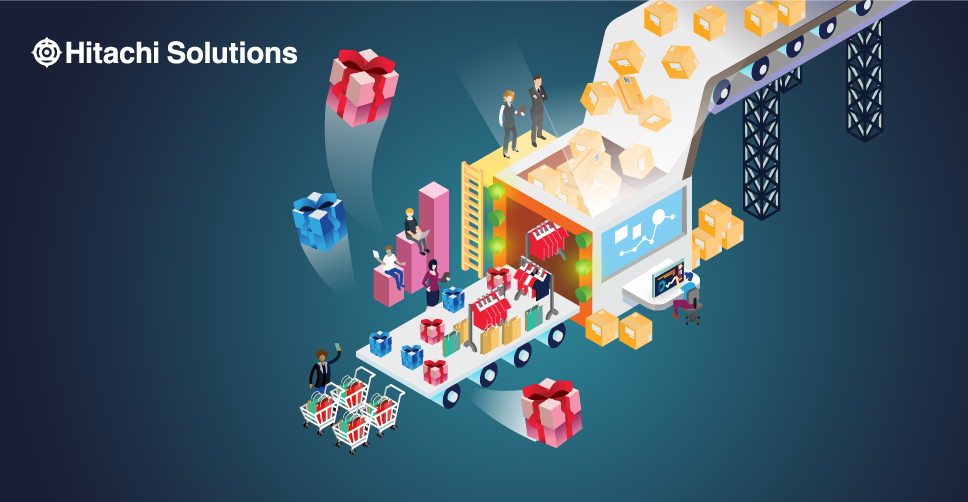

Compete and Win With an Intelligent Supply Chain
Create operational agility with analytics, automation, and new delivery models.
Download the WhitepaperAll retail businesses must contend with eliminating unnecessary costs connected to the supply chain process. One widely known cost center in the supply chain is reverse logistics. When left unchecked, reverse supply chain logistics can disrupt the entire supply workflow, cutting into profits and leaving retailers with inventories that can’t be sold. But when reverse logistics is optimized, they can present an opportunity for retailers to maximize sales and reduce costs.
So how do reverse logistics processes work, and how can retailers take advantage of their intricacies? Especially in the age of a booming ecommerce market, efficient reverse logistics planning is an essential tool for retailers. This blog post will outline the ins and outs of reverse logistics management, the reverse supply chain, and the benefits of streamlining these workflows.
What is Reverse Logistics?
At the most basic level, reverse logistics refers to all operations related to the returns of products and materials. In the context of retail, that definition needs to be expanded upon. In a paper presented at the Annual Conference for Nordic Researchers in Logistics, reverse logistics was defined as “the process of moving goods from their typical final destination for the purpose of capturing value, or proper disposal.”

For retailers, this happens all the time. Customers return goods, stores return goods to warehouses, or styles are no longer in season and are pulled from shelves. All of these products still cost money and still hold value, and reverse logistics provides retailers with a means of recapturing some of that value.
Essentially, any process or handling of a good after the initial sale involves reverse logistics. Typical examples of reverse logistics and reverse supply chain include:
- Product returns and management of their resale.
- Remanufacturing and refurbishing of products.
- Management and sale of surpluses.
It helps to understand reverse logistics in terms of its relation to traditional logistics in retail. According to the Council of Supply Chain Management Professionals each is defined as:
Traditional Logistics – “The process of planning, implementing, and controlling the efficient, cost-effective flow of raw materials, in-process inventory, finished goods and related information from the point of origin to the point of consumption for the purpose of conforming to customer requirements.”
Reverse Logistics – “The process of planning, implementing, and controlling the efficient, cost effective flow of raw materials, in-process inventory, finished goods and related information from the point of consumption to the point of origin for the purpose of recapturing value or proper disposal.”
Utilizing Technology in the Reverse Supply Chain
It is also vital to ensure that the flow of products is optimized in the reverse supply chain. Returns management is a huge arm of retail business and utilizing intelligent supply chain tools can empower retailers with the data and insights they need to improve other branches of retail operations.
The reverse supply chain should contain the following steps:
- Product acquisition: Obtaining the used product from the user by the reseller or manufacturer.
- Reverse logistics: Transporting products to a facility for inspecting, sorting, and disposition.
- Inspection and disposition: Assessing the condition of the return and making the most profitable decision for reuse.
- Remanufacturing or refurbishing: Returning the product to its original specifications.
- Marketing: Creating secondary markets for the recovered products.
Interested in learning more about intelligent supply chain management? Check out our latest blog post about how to best utilize digital transformation technologies to optimize the retail supply chain.
The Benefits of Using the Right Technology for Reverse Logistics
Overall, the biggest benefits of optimized reverse logistics are:
- Increase asset utilization
- Create happier customers/return customers
- Generate better ROI
- Reduce losses and unplanned revenue
- Improve environmental sustainability
- Promote a culture of industry leadership
Customer expectations today call on retailers to provide painless return processes, a trend pushed heavily by ecommerce giants. Making the return process painless has made returns more common, with some industry statistics estimating that return rates are somewhere between 30%–40% according to Forbes. This isn’t all bad, though. Retailers now provide liberal return policies to customers, earning their trust, repeat business, and a new avenue for optimizing reverse logistics.
Businesses can benefit from all these retail returns. The value in returned merchandise can be seen in the data and insights that inform future decisions surrounding inventory levels and labor needed. More efficient returns management can also mean more cash flow from repurposed returns and higher levels of customer satisfaction.
Finally, the need to find useful and efficient ways to recycle or properly dispose of unused products is also an upside of optimized reverse logistics. Once thought to be wasteful, there is a market for recycled and reused retail products, and the environmental implications are fundamentally important to many shopping demographics. The reuse retail trend can also be credited to increased regulatory restrictions, which further emphasize the need for a well-managed reverse logistics plan.
To optimize a reverse logistics plan, retailers must start and end with data and analytics. These insights into every step of the reverse supply chain are the key to unlocking maximum efficiencies and a greater profit margin. At Hitachi Solutions, we help retailers every day gain valuable insights into their operations, so they can make data-driven decisions about every branch of their business. Contact us today to learn more about how we can help with your reverse logistics strategy.


